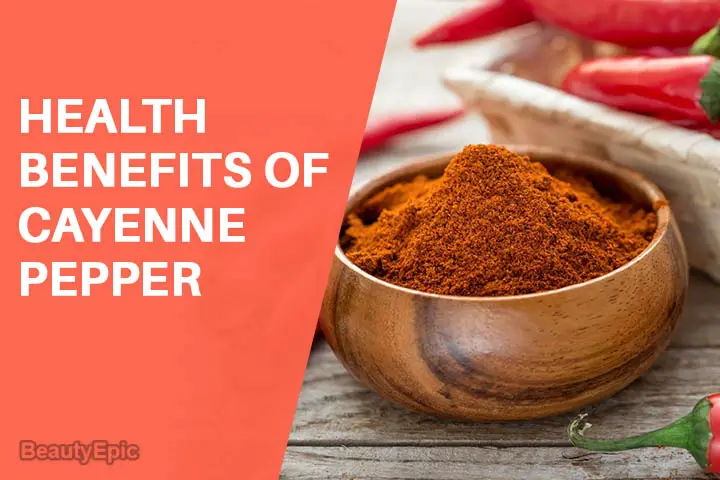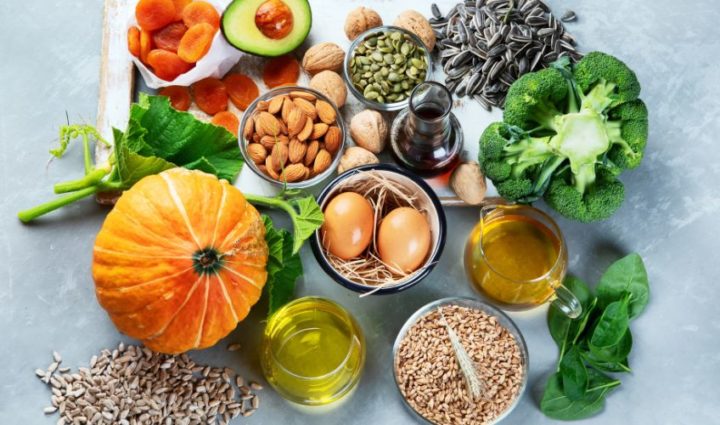
Important: This article is for informational purposes only. Please read our full disclaimer for more details.
Craving a spicy way to boost your health? Look no further than cayenne pepper! This fiery red chili, known scientifically as Capsicum annuum, is a nutritional powerhouse packed with capsaicin. Not only does it boost metabolism and aid in weight loss, but it also enhances digestion, and supports cardiovascular health by preventing blood clots and regulating blood pressure. Incorporate cayenne pepper into your diet to enjoy its flavor and potential health benefits!
Nutritional Powerhouse: Cayenne Pepper
Cayenne pepper packs a surprising amount of nutrition for its fiery kick. Here’s a look at the nutrients found in a single 45-gram hot red chili pepper:
- Calories: 18
- Protein: 0.8 grams
- Fat: 0.2 grams
- Carbs: 3.9 grams
- Fiber: 0.7 grams
- Vitamin C: 72% of the Daily Value (DV)
- Provitamin A (as beta-carotene): 48% of the DV
- Vitamin B6: 13% of the DV
- Vitamin K: 5% of the DV
Key Nutrients
- Vitamin C: A powerful antioxidant essential for immune function, healthy skin, and wound healing.
- Provitamin A (as beta-carotene): Your body converts beta-carotene to vitamin A, which is crucial for vision, cell growth, and a healthy immune system.
- Vitamin B6: Plays a role in energy metabolism, red blood cell production, and brain function.
Keep in mind: This information reflects a single serving size. Most people will likely consume cayenne pepper in smaller quantities due to its spiciness. However, even a small amount can contribute to your daily nutrient intake.
[ Read: Benefits of Turmeric ]
Exploring the Potential Health Benefits of Cayenne Pepper
1. Nutritional Powerhouse
Cayenne peppers are rich in essential nutrients. A single 45-gram hot red chili pepper offers 72% of the Daily Value (DV) for vitamin C and 48% of the DV for provitamin A. These nutrients play vital roles in immune function, skin health, and vision. (1)
2. Metabolic Boost
Cayenne pepper boosts metabolism due to capsaicin, its active compound, which increases heat production in the body, leading to more calorie burning. (2)
3. Digestive Aid
Some studies suggest that cayenne pepper may aid digestion by stimulating the digestive tract, potentially increasing enzyme production and gastric juices. This process may help the body metabolize food more efficiently and absorb nutrients. (3)
4. Rich in Vitamin A
Cayenne pepper is an excellent source of provitamin A, with just one teaspoon providing about 44% of your daily recommended intake. Provitamin A is essential for maintaining healthy vision, skin, and immune function (4)
5. Capsaicin Content
Capsaicin in cayenne pepper inhibits cancer cell growth, especially in lung cancer cells related to tobacco use. While some studies suggest capsaicin may inhibit cancer cell growth, more research is required to determine its effectiveness as a treatment. (5)
6. Fiber Source
Incorporating a tablespoon of cayenne pepper into your diet provides 5% of the recommended daily value of fiber, essential for promoting healthy digestion and regular bowel movements. (6)
7. Improves Psoriasis
The topical application of a specialized 0.025% capsaicin cream, extracted from the potent cayenne pepper, has been demonstrated to notably diminish both the redness and scaling commonly associated with psoriasis, thereby offering considerable relief to those affected by this condition. (7)
8. Weight Management and Appetite Control
Capsaicin in cayenne peppers is linked to weight loss and obesity management. Research suggests it can decrease appetite, increase fat burning, and promote feelings of fullness, aiding in better weight control and metabolic health. (8)
9. Improved Muscular Endurance
Scientific inquiry underscores the promising capacity of cayenne pepper to enhance muscular endurance. Integrating cayenne into your dietary regimen might amplify physical prowess and stamina, potentially leading to improved performance during physical activities. (9)
How to Spice Up Your Dishes with Cayenne Pepper
Cayenne pepper’s fiery kick goes beyond just adding heat to your food. It can unlock new flavor profiles and add depth to a variety of dishes. Here are some creative ways to incorporate cayenne pepper into your cooking:
1. Boost Savory Dishes
A sprinkle of cayenne pepper adds a subtle warmth to soups, stews, chilis, and stir-fries. Experiment with adding it at different stages of cooking for varying levels of heat.
2. Spice Up Eggs
A dash of cayenne pepper enlivens scrambled eggs, omelets, and quiches. It pairs particularly well with cheese and vegetables.
3. Surprise in Sauces and Dressings
A pinch of cayenne pepper adds a surprising kick to salad dressings, marinades, and dipping sauces.
4. Smoky Twist
Cayenne pepper complements smoky flavors beautifully. Try adding it to dishes with smoked paprika, chipotle peppers, or grilled meats.
5. Sweet Heat
Believe it or not, cayenne pepper can enhance sweet dishes like chocolate desserts, fruit chutneys, or spiced cookies. Start with a tiny amount and adjust to your taste preference.
Precautions Before Using Cayenne Pepper
1. Cardiovascular Conditions
Heart patients or those with high blood pressure should consult healthcare providers before using cayenne. Capsaicin may worsen cardiovascular conditions by increasing heart rate and blood pressure. (10)
2. Avoid Eyes and Mucous Membranes
To prevent irritation, it is important to keep cayenne pepper away from your eyes and mucous membranes. This precautionary measure is essential in safeguarding against potential discomfort or harm. (11)
3. Foodborne Illness Risk
The FDA warns that spices, including pepper, contains pathogens like Salmonella. To reduce foodborne illness risk, obtain cayenne pepper from trustworthy sources and handle and store it properly. (12)
4. Wear gloves
when handling fresh cayenne peppers to avoid skin irritation from capsaicin. It can cause burning and irritation, especially if it touches sensitive areas. Gloves act as a protective barrier, keeping your hands safe while cooking. (13)
5. Allergic Reactions
Capsaicin in cayenne pepper can cause allergic reactions, from mild skin irritation to severe symptoms like difficulty breathing and swelling. People allergic to chili peppers should avoid cayenne and seek medical advice if adverse effects occur. (14)
How to Choose the Right Cayenne?
1. Consider Quality
Choose cayenne pepper with a vibrant color and a robust, spicy scent. Fresher options are more likely to deliver exceptional flavor and potency.
2. Determine Heat Level
Cayenne peppers come in a range of heat levels. Choose a variety that matches your taste preferences and intended culinary purpose, whether you prefer a mild or fiery kick.
3. Check for Freshness
Inspect the packaging date or opt for whole cayenne peppers to ensure freshness. Avoid any showing signs of mold or spoilage, as they could contain harmful compounds like aflatoxin.
4. Consider Storage
When buying whole cayenne peppers, choose airtight containers to keep them fresh. Store them in a cool, dry place away from direct sunlight to maintain their flavor and potency for longer periods.
5. Opt for Organic Options
Opt for organic cayenne peppers whenever available to reduce exposure to pesticides and support a more environmentally sustainable choice.
Cayenne pepper is a cost-effective spice that can add a spicy kick while potentially offering health advantages. However, it’s not a replacement for prescribed medications. Due to its thermogenic properties, it can help alleviate pain and reduce inflammation when used correctly. Consulting a doctor before using any substance for medicinal purposes, particulars in the treatment of chronic conditions, is crucial.
Medical Disclaimer: The information is intended for educational purposes only and should not replace professional medical advice.
You Might Also Like:
- How to Get Rid of Varicose Veins Naturally?
- How to Get Rid of Cellulite Naturally at Home?
- How to Use Ginger for Colds Relief?
Image: 1


















